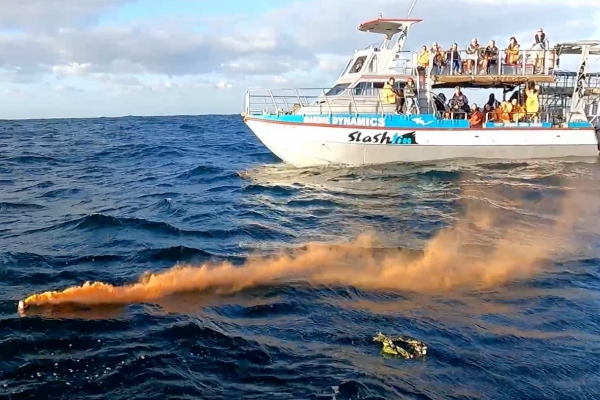Birkenhead Commemoration 26 February 2024

Just before setting my alarm for 5:00 am on Monday morning, February 26, I caught a glimpse of the beautiful bright full moon. It was just after midnight, about an hour before the Birkenhead hit a rock, 1.5 km from the coast of Gansbaai, disappearing into the deep ocean after a mere 20 minutes, 172 years ago. If only the moon were there to safely guide the ship away from the rock or help the estimated 643 to swim to shore. But only 193 of the estimated 643 survived. Our local Gansbaai amateur astrologer, Johan le Roux, checked for us. The moon went under just before 11:00 on February 26, 1852. It was pitch black.
The Birkenhead is known worldwide for the bravery of the men who, under the Captain’s command, stood back with the motto "women and children first." HMS Birkenhead, also referred to as HM Troopship Birkenhead or Steam Frigate Birkenhead was one of the first iron-hulled ships built for the Royal Navy. She was designed as a steam frigate but was converted to a troopship before being commissioned. She was wrecked on February 26, 1852, while transporting troops to Algoa Bay at Danger Point near Gansbaai, 87 miles (140 kilometers) from Cape Town, South Africa. Military personnel of various ranks of the British Army, including members of the 74th Regiment of Foot, Queen’s Royal Regiment, 43rd Regiment of Foot, and a large number of soldiers, were on board the vessel. Also on board were 20 women and children and 9 horses. Unfortunately, there were not enough serviceable lifeboats for all the passengers, and the soldiers famously stood firm on board, allowing the women and children to board the boats safely and escape the sinking. Only 193 of the estimated 643 people on board survived, and the soldiers' bravery gave rise to the unofficial "women and children first" protocol when abandoning ship, while the "Birkenhead drill" of Rudyard Kipling's poem came to describe courage in the face of hopeless circumstances.

.jpg)
Glenda Kitley from the Gansbaai Tourism Office has been involved in arranging the yearly Birkenhead Commemoration for more than two decades. On Monday, February 26, 2024, we had another beautiful commemoration early in the morning, with the Marine Dynamics vessels Dream Catcher and Slashfin setting sail to the exact spot where the Birkenhead still lies in her final resting place, to say a little prayer and think about the more than 400 lives lost on that quiet, pitch-black February morning.
What made this year's commemoration special was that Glenda received the email below:
Dear Sirs, The HMS Birkenhead was built by my great-great-grandfather John Laird, a shipbuilder of Birkenhead. (He also built CSS Alabama). We will be in South Africa, Hermanus, next February and wonder if you will be holding a Remembrance Service on February 26, 2024, and if so, whether it might be appropriate to ask if we could join you? Look forward to hearing from you. Thanks, Robert Leather.
Of course, we were excited to meet Robert and his wife Suzanne. On Sunday, February 25, we gathered at the Marine Hotel for a high tea with this delightful couple who love visiting South Africa and drinking rooibos tea with their cupcakes! Robert and Suzanne joined the reef-laying ceremony at the Danger Point Lighthouse. In 1895, the Danger Point Lighthouse was built, providing more security for the ships in these dangerous waters. After the ceremony, Robert and Suzanne met Wilfred Chivell at the Great White House to have a look at the artifacts that Wilfred treasures from the Birkenhead. Being a keen wreck diver himself, Wilfred hopes to, in the near future, have a permanent Birkenhead Memorial Exhibition at the Great White House.
Robert and Suzanne also wanted to throw a wreath into the ocean at Kleinbaai Harbour for the young soldiers who lost their lives. As I said goodbye to Robert and Suzanne and walked from Kleinbaai Harbour, I couldn’t help thinking about well-known writer SD Fourie’s words on the boat, who yearly joins the Marine Dynamics team for the Birkenhead Commemoration, saying, “I will forever see 444 heads disappearing behind the waves as we watched the waves crash over the Birkenhead rock.”
.jpg)
Christine Wessels: PR Marine Dynamics/Dyer Island Conservation Trust.
_1420x587_crop_80.jpg)






